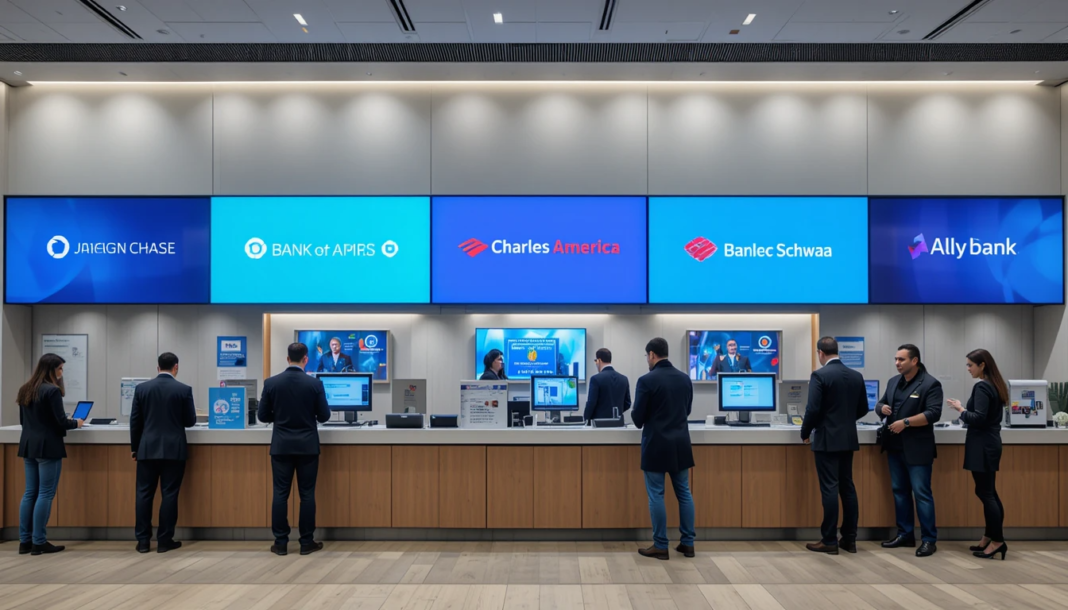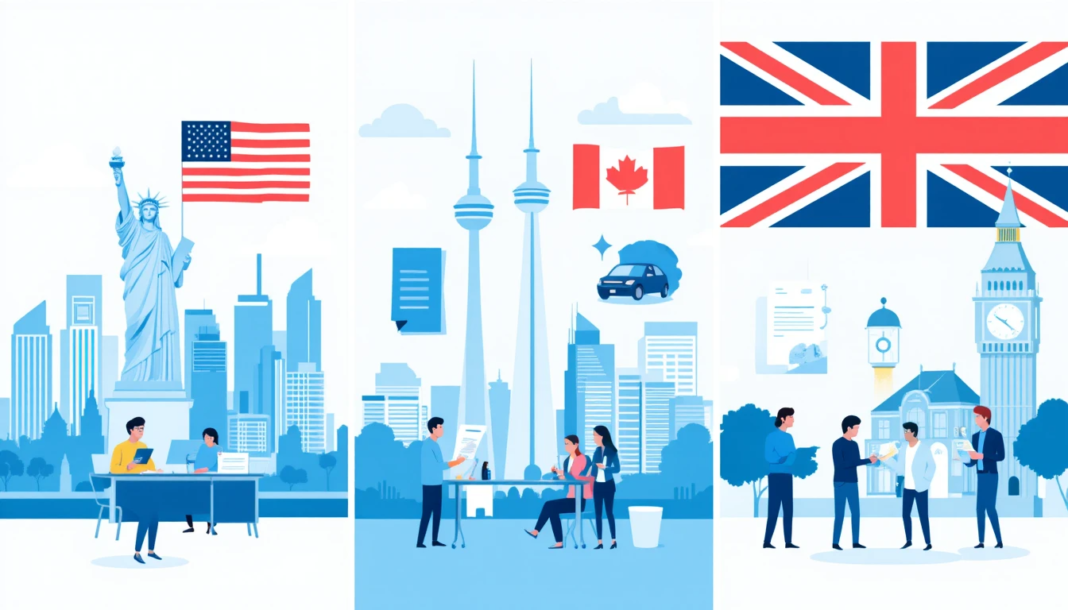The Best Way to Get Financing in the USA and Canada (2025 Guide)
Getting financing in the USA and Canada can be a game-changer for individuals looking to buy a home, start a business, consolidate debt, or invest in personal growth. However, navigating the financial landscape in these two countries requires understanding the available options, eligibility requirements, and strategic approaches.
In this comprehensive guide, we’ll explore:
- Types of financing available
- Best sources of financing in the USA and Canada
- Key steps to get approved
- Government programs and grants
- Best practices to increase approval chances
- Comparison: USA vs Canada financing landscape
- FAQs about financing
1. Types of Financing Available
a. Personal Loans
These are unsecured loans used for a variety of purposes, such as home renovations, debt consolidation, or emergencies. Offered by banks, credit unions, and online lenders.
b. Business Loans
For startups or growing businesses. These include SBA loans (USA), Canada Small Business Financing Program (Canada), lines of credit, and equipment financing.
c. Mortgages
Secured loans for purchasing property. Requires strong credit, down payment, and income verification.
d. Auto Loans
Specifically for purchasing vehicles, offered by banks, credit unions, dealerships, and online lenders.
e. Credit Cards
While not traditional loans, credit cards offer revolving credit and can help in short-term financing needs if managed wisely.
f. Student Loans
Government and private loans are available for educational expenses. In the USA: Federal Student Aid; in Canada: Canada Student Loans Program.
2. Best Sources of Financing in USA & Canada
United States
- Traditional Banks: Wells Fargo, Chase, Bank of America
- Credit Unions: Navy Federal, Alliant Credit Union
- Online Lenders: SoFi, LendingClub, Upstart
- Government Programs: SBA Loans, FHA Mortgages
- Peer-to-Peer (P2P): Prosper, LendingClub
- Community Development Financial Institutions (CDFIs)
Canada
- Major Banks: RBC, TD Canada Trust, Scotiabank, BMO, CIBC
- Credit Unions: Vancity, Meridian, Desjardins
- Online Lenders: Borrowell, Fairstone, GoPeer
- Government Programs: CSBFP (business), CMHC (housing), Canada Student Loans
- FinTech Options: KOHO, Mogo, Wealthsimple Loans
3. Steps to Get Approved for Financing
- Know Your Credit Score
Your credit score plays a crucial role in determining eligibility. USA: FICO Score | Canada: Equifax or TransUnion. - Compare Lenders
Use comparison tools or talk to a financial advisor. Check APR, repayment terms, hidden fees, and penalties. - Prepare Documentation
Includes:- Proof of income (payslips, tax returns)
- ID and residence proof
- Bank statements
- Business plan (for business loans)
- Prequalification
Many lenders offer soft-check prequalification to assess your likelihood of approval without impacting your credit. - Apply Online or In-Person
Submit your application with complete and accurate information. Follow up if needed. - Review Terms and Sign
Once approved, review the interest rate, fees, repayment schedule, and sign the agreement.
4. Government Programs and Grants
USA
- SBA Loans: For small business growth and startups. Includes 7(a) loans, 504 loans, and microloans.
- FHA Loans: For first-time home buyers.
- USDA Loans: For rural property purchases.
- Federal Grants: Especially for research, minority-owned businesses, and nonprofits.
Canada
- CSBFP: Canada Small Business Financing Program.
- CEBA (formerly): Support during COVID-19.
- Futurpreneur Canada: Youth entrepreneur funding.
- CMHC: Mortgage support programs.
- Grants: Innovation grants, regional development programs.
5. Best Practices to Improve Approval Chances
- Build Your Credit Score: Pay bills on time, reduce credit usage, and check reports for errors.
- Reduce Debt-to-Income Ratio: Lenders prefer borrowers with less existing debt.
- Increase Your Income: Show multiple income streams or side hustles.
- Offer Collateral: Secured loans may have higher approval odds and lower rates.
- Apply Strategically: Avoid applying for multiple loans simultaneously as it affects credit.
6. Comparison Table: USA vs Canada Financing Landscape
| Feature | USA | Canada |
|---|---|---|
| Credit Score Range | 300 – 850 (FICO) | 300 – 900 (Equifax, TransUnion) |
| Government Business Loans | SBA (7a, 504, Microloan) | CSBFP, Futurpreneur |
| Mortgage Support | FHA, VA, USDA loans | CMHC-insured mortgages |
| Online Lending Market | Extensive (SoFi, LendingClub, Upstart) | Growing (Borrowell, Fairstone, GoPeer) |
| Student Loan Programs | Federal Student Aid, Private Loans | Canada Student Loans Program |
| FinTech Growth | Strong (AI, automation, open banking) | Moderate but accelerating |
| Credit Unions | Widely used for lower rates | Very popular, especially in Quebec and B.C. |
| P2P Lending | Prosper, LendingClub | GoPeer, Lending Loop |
| Grant Programs | Research, non-profits, startups | Innovation grants, youth support |
7. Expert Tips for Choosing the Right Financing Option
- Start with your bank or credit union – They may offer better terms for existing customers.
- Use financing calculators to evaluate affordability.
- Ask about early repayment fees before signing.
- Avoid payday loans – High interest and predatory practices.
- Hire a financial advisor for large loans or business financing.
- Explore co-signers if your credit isn’t strong enough.
- Use government-backed options wherever possible – lower interest and better support.
8. Frequently Asked Questions (FAQs)
Q1: What credit score is needed for most loans in the USA and Canada?
- USA: 650+ for most personal loans; 700+ for better rates.
- Canada: 660+ is ideal for competitive interest rates.
Q2: Can newcomers to Canada or the USA get financing?
Yes, but it’s challenging. Look for:
- Newcomer programs (RBC, Scotiabank in Canada)
- Secured credit cards to build credit
- Co-signers or joint applications
Q3: Are online loans safe?
Yes, if from reputable, regulated lenders. Always check reviews, Better Business Bureau ratings, and privacy policies.
Q4: What’s the easiest loan to get?
- Secured personal loans (if you have collateral)
- Credit-builder loans
- Peer-to-peer loans
Conclusion: Choosing the Best Path to Financing
Financing in the USA and Canada is more accessible than ever thanks to digital banking, government programs, and innovative lending platforms. Whether you’re looking to buy a house, fund your education, or launch a startup, the best way to get financing is to:
- Understand your financial profile.
- Compare multiple options.
- Leverage government and bank programs.
- Maintain financial discipline post-approval.


